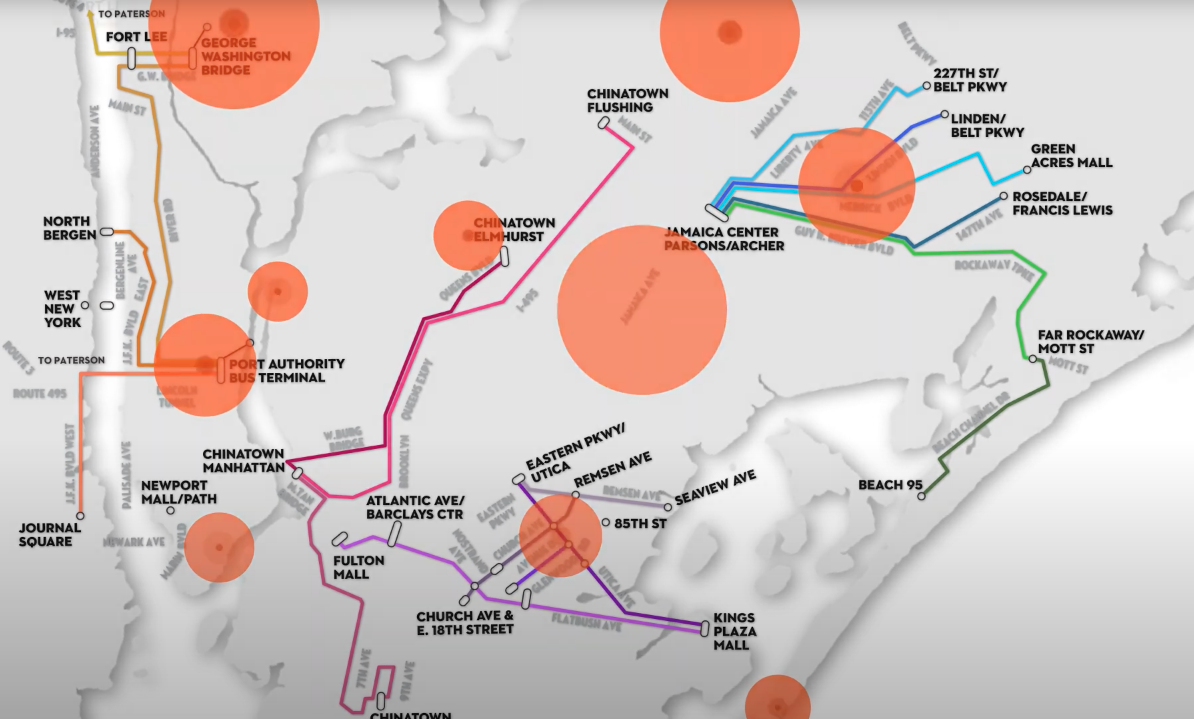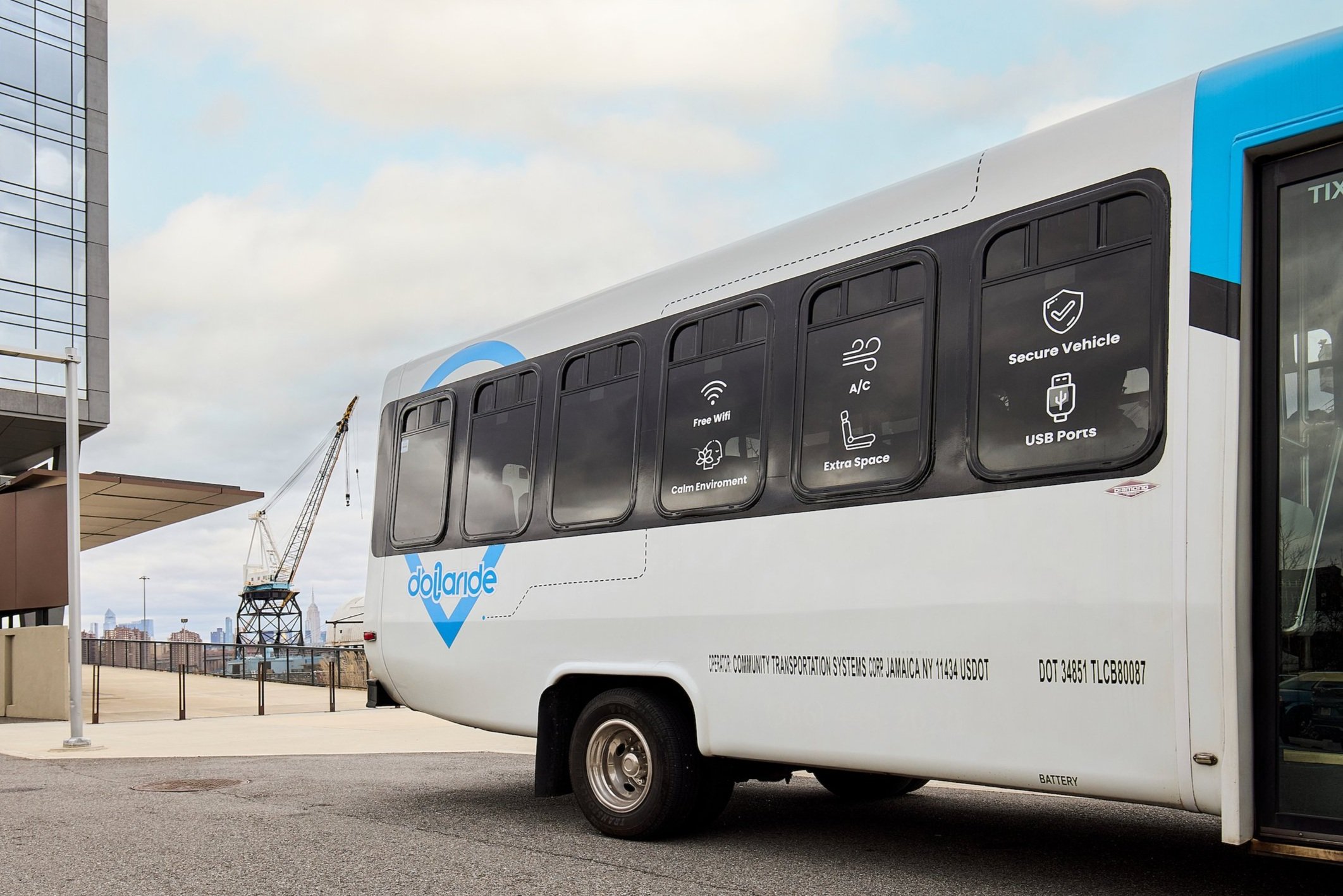NYC boasts one of the most active transportation systems in the country. Cars, buses, bikes, and scooters share busy roads. Trains rumble above and below ground. Millions of New Yorkers travel throughout the city each day. Yet, even with various modes of transportation servicing the region, many commuters still can’t get to their destinations efficiently. Why? The problem can be found in the outer boroughs, in transit deserts, and it’s one of New York’s biggest transportation problems. Let’s take a closer look.
What exactly are transit deserts?
Transit deserts are areas characterized by limited transportation, including poor public transportation options and a lack of infrastructure. The term “transit desert” originates from a study (Jiao et.al 2012) that determined a correlation between transit dependency and transit deserts. Those who are transit dependent rely solely on the whims of public transportation.
In New York City, there are roughly 2 million residents living in transit deserts. Areas such as the Bronx, Brooklyn, and Queens struggle with this the most, especially as you travel further away from the city’s center. The majority of these communities are made up of low income citizens who rely heavily on public transit for their daily commutes. They simply don’t have access to the necessary transportation options that they should.
For example, someone living in a transit desert may need to walk at least 15 minutes to the nearest subway or bus stop. After that, they may also need to transfer to an additional subway or bus just to reach their final destination. For many of these residents (particularly the elderly and people with disabilities), this daily commute is simply unsustainable.
How do transit deserts form?
Transit deserts often form when populations are displaced. Research has shown transit deserts usually exist in low-income neighborhoods away from city centers where transportation is abundant. Rising housing costs push these low-income communities further away from these transit resources. Major bus and rail lines weren't designed to effectively reach these low-income areas. The result, profound wait times, delayed maintenance, and significant amounts of time between station stops. Along with a steady increase in the population, over time, certain areas of NYC have developed into transit deserts.
How do transit deserts affect communities?
Apart from the daily hassles many New York commuters face while traveling, the health hazards of living in a transit desert go beyond minor inconveniences. Analysts say that the hardships these residents experience in getting from point A to point B can prohibit access to fresh food, clean air and quality medical care.
Food security and food deserts are often associated with the access and availability of reliable transportation. Furthermore, a research review published in the Journal of Community Health states that, "In 25 separate studies, 10–51 percent of patients reported that transportation was a barrier to health care access.”
Transit deserts isolate individuals and communities. NYC continues to grow, and the population is moving further away from the city’s center. Adequate transportation options must evolve to accommodate these residents. If not, the gaps in transportation will widen and NYC will continue to neglect millions of commuters affected by transit deserts.
How does Dollaride solve the problem?
Dollaride’s mission is to make public transportation accessible to anyone, anywhere, starting with those who live in transit deserts. Our technology powers shuttle services that create reliable transportation for employees and community members. We streamline the collection of digital payments, location of passengers, and expansion into new territories.
Emily Kirsch, Founder and Managing Partner at Powerhouse Ventures (a venture fund that backs entrepreneurs building the digital infrastructure for rapid decarbonization) explains why her team invested in Dollaride:
“Dollaride provides the digital infrastructure to gather accurate, timely transportation data, closing the gap between informal transit riders and drivers in areas with limited transportation supply. By digitizing informal transit networks, Dollaride helps riders access affordable transportation, enables drivers to grow their ridership, and equips businesses to offer commuter options that are cheaper than existing alternatives—all while reducing carbon emissions and bolstering clean mobility options.”
Dollaride helps businesses and ground transportation providers fill transportation gaps while bringing a familiar digital application to commuters. By empowering community members and organizations with technology and drivers, Dollaride strives to improve transportation equity and put an end to transit deserts in New York City.
(Read more on Dollaride’s Solution to NYC transit deserts).















